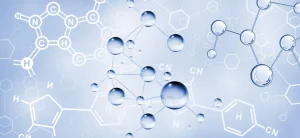Comparison and analysis of the application performance of several anionic surfactants
In the cleaning field, anionic surfactant is the earliest development, the largest production, the most varieties and the most mature industrialization of a class, although the anionic surfactant in the net washing ability is generally worse than the nonionic surfactant, but with the nonionic does not have the resistance to acid, alkali, hard water, low-temperature mobility, etc., especially on the price compared to the nonionic product is more inexpensive, so the anionic surfactant is also one of the largest varieties in the family of surfactants. Therefore, anionic surfactants are the most varieties and the largest amount of surfactants in the surfactant family. Anionic surfactants are usually categorized into sulfonate type, carboxylate type, sulfate type, phosphate type and so on.
The basic properties of several anionic surfactants

01
Dodecyl benzene sulfonic acid
Dodecyl benzene sulfonic acid and its sodium salt are the anionic surfactants with the most mature production process and the largest annual output, which have strong degreasing ability, high foam, low cost and good penetration. There is a defect is not resistant to hard water, the use of sodium dodecylbenzenesulfonate at the same time, often compounded with some water-softening substances, such as phosphates and other substances. Another defect is the use of alkyl benzene sulfonic acid compounding products, the concentration should not be too high, otherwise it is easy to delamination.

02
Sodium fatty alcohol ether sulfate-AES
AES has both ethoxy and sulfonic acid groups, so it has both anionic and nonionic properties. there are two kinds of AES products, one is based on synthetic alcohol as raw material (2EO-AES); one is based on natural lauryl alcohol as raw material (3EO-AES). aes has excellent resistance to hard water and emulsification ability, and is easy to be thickened with inorganic salts, it is especially favored by the field of daily chemicals, especially mild to the skin. AES is particularly favored by the cosmetic industry, especially for its mildness to the skin, and its good performance in preventing dry, cracked and rough skin; its disadvantage is that it is slightly less stable in acidic media – the pH value must be controlled to be much higher than 4, and its detergency is inferior to that of LAS.
03
FMES
The earliest anionic product of fatty acid methyl ester is low carbon chain coconut oil or palmitic acid methyl ester sodium sulfonate, i.e., MES, which is not ethoxylated, and its detergent and detergent performance is not as good as LAS and AES. FMES is generally made by sulfonation of fatty acid methyl ester with an ethoxylation of EO number of 7 as raw material, and its detergent and detergent ability has been greatly improved; the fatty acid is a large molecular weight 18-carbon stearic acid, and therefore has excellent detergency. The fatty acid is a large molecular weight 18-carbon stearic acid, so it has excellent dispersing power, and it is an all-round surfactant with balanced emulsification, dispersion, washing and alkali resistance, and it is the product with the highest degreasing and decontamination power among the anionic surfactants at present, but the biggest defect is that the foam is low, and it is difficult to be promoted in the field of daily chemicals in pursuit of foam.

04
Sodium α-alkenyl sulfonate-AOS
The biggest advantage of AOS is that it is easy to dry and spray powder, and the biggest advantage over straight-chain alkyl benzene sulfonic acid is that it has better hard water resistance, better detergency, good biodegradability, and it still occupies a place in various powder detergents. In liquid detergent applications, AOS has a strong viscosity-reducing effect, leading to product thinning.
05
Sodium Sec-Alkyl Sulfonate – SAS
Sodium sec-alkyl sulfonate is particularly friendly to the environment and has a rich foam, which is suitable for household washing applications, especially when compounded with nonionic surfactants, where the foam increases dramatically. The hydrophilic group of sodium sec-alkylsulfonate has the sulfonic acid group in the middle position, so the product has excellent penetration, but has poor detergency, especially for grease or wax, almost no detergency, and is mainly used for the washing of light dirt. The molecular chain of sodium sec-alkyl sulfonate is neatly arranged, the carbon chain is shorter, the ability of anti-dirt redeposition is poor, and although it has the ability to remove the dirt adhered on the fiber, there is the disadvantage that the dirt will be re-adhered to the fiber, and the surface of the clothes will be greyish and yellowish after washing.
06
Alcohol Ether Carboxylates-AEC
Fatty alcohol ether carboxylates have the structure and performance similar to AES, compared with AES, the foam is richer and more delicate, more persistent, and gentler to the skin, especially suitable for skin-friendly daily products such as facial cleanser, shower gel, and cosmetics. The production process of this kind of products is much more complicated than that of AES, and how to improve the yield of target products and reduce the side reactions and residual alcohols is the main resistance that restricts the large-scale promotion of fatty alcohol ether carboxylates. On the other hand, the high and stable foam, poor permeability and high price of fatty alcohol ether carboxylates also limit their development in the field of industrial cleaning.
07
Alcohol ether phosphate-AEP
Phosphate surfactants, a wide range of broadly divided into two categories, one for the direct phosphorylation of fatty alcohols products, with low foam and solubility characteristics, alkali resistance and poor cleaning power. The other is the phosphate ester of fatty alcohol polyoxyethylene ether, which has excellent alkali resistance and can significantly improve the alkali resistance of other surfactants. Phosphate ester surfactants also have many unique features, such as antistatic, soft, smooth, etc., also used in some special requirements of the industrial field. Such as leather degreasing, plastic antistatic, acidic corrosion inhibitor and so on.

